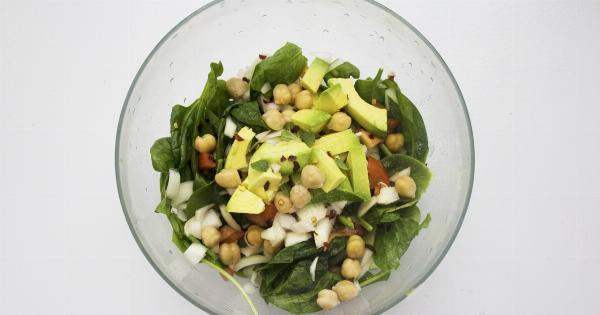Apples are one of the most popular fruits consumed worldwide. They are not only delicious but also packed with essential nutrients, making them a perfect addition to a healthy diet.
But with various forms of apples available in the market, you might be wondering which form provides the most nutritional value. In this article, we will explore the different forms of apples and determine which one offers the maximum nutrition.
Fresh Apples
Fresh apples are the most common form of this fruit and are readily available in grocery stores. These apples are known for their crisp texture, juiciness, and natural sweetness.
They come in a wide range of varieties, such as Granny Smith, Red Delicious, and Fuji, each offering a slightly different flavor and nutritional profile.
When it comes to nutritional value, fresh apples are a fantastic choice. They are low in calories and fat while being rich in dietary fiber, particularly in the form of soluble fiber called pectin.
Pectin has been shown to improve digestive health, regulate blood sugar levels, and reduce cholesterol levels.
Fresh apples are also a good source of vitamin C, an antioxidant that boosts the immune system and promotes collagen synthesis.
Additionally, this fruit contains potassium, a mineral necessary for maintaining proper fluid balance, nerve function, and muscle contraction.
Apple Juice
Apple juice is a popular beverage made from pressing fresh apples and extracting their liquid content. While it may retain some of the nutrients found in fresh apples, the juicing process eliminates most of the fiber present in the fruit.
This means that apple juice is lower in fiber compared to eating a whole apple.
One benefit of apple juice is its high vitamin C content. However, it is important to note that most store-bought apple juice undergoes pasteurization, a process that involves heating the juice to kill any harmful bacteria.
Unfortunately, this process can also lead to some loss of heat-sensitive nutrients like vitamin C.
Apple juice also contains natural sugars, which can cause a rapid spike in blood sugar levels. Therefore, individuals with diabetes or those who are monitoring their blood sugar should be cautious of their apple juice intake.
Apple Sauce
Apple sauce is made by cooking and mashing apples until they reach a smooth consistency. Similar to apple juice, the cooking process reduces the fiber content of the fruit, although not as significantly.
Apple sauce can be a great option for individuals who may have difficulty eating whole apples due to dental issues or other reasons.
While the fiber content in apple sauce is higher compared to juice, it is still lower than consuming a whole apple. However, apple sauce retains many of the nutrients found in fresh apples, especially if it is made without added sugars or sweeteners.
One key advantage of apple sauce is its versatility in cooking and baking. It can be used as a healthier alternative to oils or fats in certain recipes while still providing a sweet and tangy flavor.
Dried Apples
Dried apples are made by removing the water content from fresh apples, leaving behind concentrated flavors and nutrients. This form of apple has a significantly higher calorie content compared to fresh ones due to its reduced water content.
Dried apples are a great source of dietary fiber, packing more fiber per serving than fresh apples. Fiber is essential for maintaining gut health, promoting feelings of fullness, and preventing constipation.
However, it is important to consume dried apples in moderation due to their higher calorie and sugar content.
While dried apples retain many of the vitamins and minerals found in fresh apples, some heat-sensitive nutrients like vitamin C may be reduced during the drying process.
Nonetheless, dried apples still offer a nutritious snack option, especially for those on-the-go.
Apple Puree
Apple puree is a smooth and concentrated form of apples made by blending or cooking the fruit until it reaches a uniform texture. This form of apple is often used as a baby food or as a base for apple-flavored sauces and desserts.
Similar to other processed apple products, apple puree has lower fiber content compared to whole apples. However, it can still provide various vitamins and minerals, including vitamin C and potassium, depending on the method of preparation.
Apple puree can be a suitable option for individuals who have difficulty swallowing solid foods or for those who are transitioning from a liquid diet to solid foods.
It offers a convenient way to incorporate the nutritional benefits of apples into a easily consumable form.
Summary
In summary, fresh apples offer the most nutritional value due to their high fiber content, essential vitamins, and minerals. They are a low-calorie fruit that supports digestive health, immune function, and heart health.
While other forms of apples like apple juice, apple sauce, dried apples, and apple puree still offer some nutritional benefits, they often have reduced fiber content compared to fresh apples.
These alternative forms may be more convenient for certain individuals or can be used in cooking and baking.
Ultimately, including a variety of apple forms in your diet can help you enjoy their delicious taste and reap the diverse range of health benefits they offer.






























